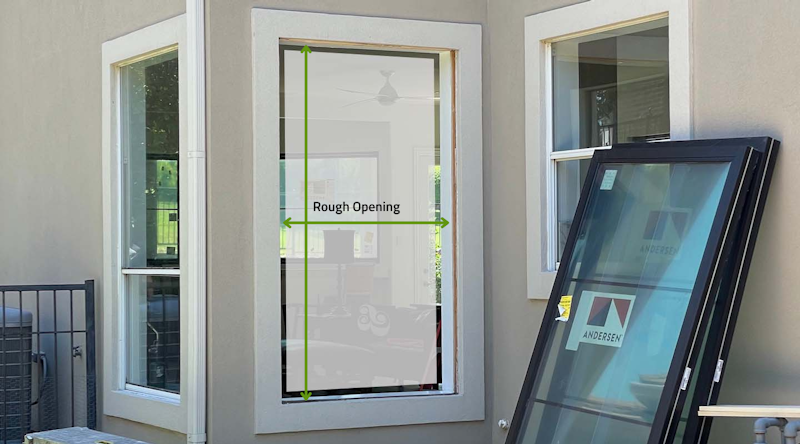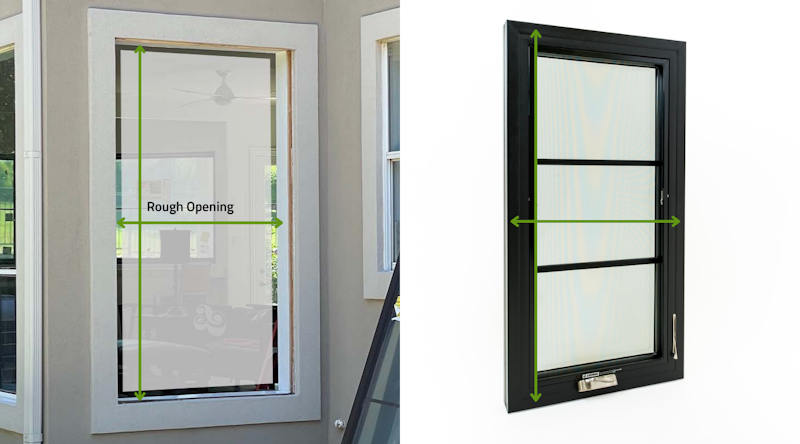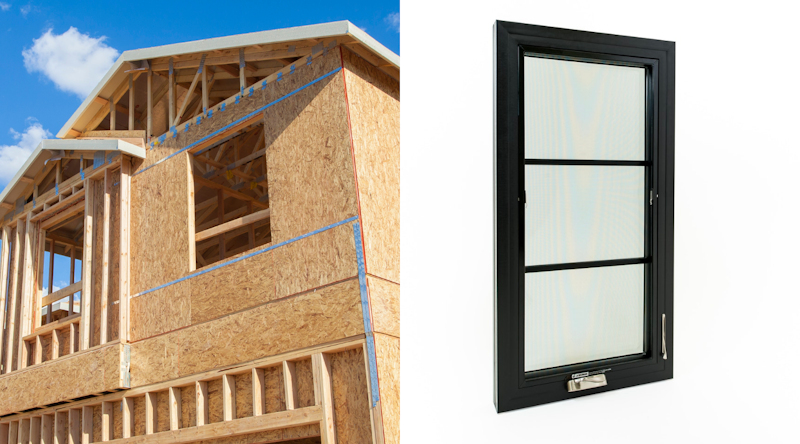
Rough Opening vs Actual Window Size
Buying windows is expensive and time-consuming (and worthwhile of course) so it is important to get your order right the first time. Most people who purchase windows for their home purchase through a window dealer or retailer and a company representative takes measurements and places the order. You'll want to know about the difference between a rough opening vs actual window size if you are trying to get an estimate online or by phone. Read on to learn how to measure for the rough opening and actual window size.
What is a "rough opening"?
A rough opening is the size of the opening in which the window frame will sit. Whether you want to create a new opening in a wall for an additional window or replace an existing window, to order your new product you will need to know what the size of the rough opening is.
The spec sheet of your order will show the rough opening size and the net frame size. The net frame size is the actual size of the window and it will always be just slightly smaller than the rough opening size.
You can adjust the rough opening size as needed but it is best to follow the recommendations provided by the manufacturer to ensure your window fits properly into your home. Note, again, that the rough opening is different from the actual window size. Next, we'll explain how to calculate the measurements.
Rough opening vs actual window size
A rough opening and the actual window size are different. A rough opening is typically a half-inch size larger than the actual size of a window. For example, if you order a quality casement window with an opening size of 60 inches by 50 inches, here's what the actual size of that window will be;
- 59-1/2 inches by 49-1/2 inches
How do we arrive at this? The half-inch is subtracted from the width and the height of the window leaving 1/4" of space on each side. Be aware that rough opening recommendations may change depending on the manufacturer. This is just a simple example of a pretty standard rough opening measure recommendation.
What if you already ordered windows and now you need to calculate the rough opening size? In this situation you just take the size of the window and add the recommended amount of space, usually, half an inch so that there is 1/4" of space on each side.
This situation sometimes comes up in new construction projects. When windows are ordered before the framing begins, knowing the net size of the window frame will help your framers plan how to frame the rough opening. If the rough opening is framed before ordering your windows, then you'll know you need to order windows smaller than the rough opening.
Is the rough opening different in new construction vs replacement situations?
The answer is simple. The rough opening for new construction will be similar to one in a replacement situation.
But there's one problem with getting the accurate rough opening size of an already existing window that needs to be replaced. The window has sheetrock which fills the entire middle region of your window. In the case of a new window, the space within the frame of a window is open and can be easy to measure. Still, you can measure the rough size of your window.
To measure for the rough opening in replacement applications follow the steps below.
- Measure the horizontal distance across the frame from jamb to jamb. Take three measurements; one at the top, center, and bottom. Take the smallest of these measurements and this will be your rough opening width.
- Measure the vertical distance from the bottom head jamb to the top of the window sill at the left, center, and right side. Take the smallest of these measurements and this is the rough opening height.
These two simple steps will tell you the approximate rough opening for the window. The order form for the windows will tell you if you need to provide the net frame size.
In Summary...
The rough opening refers to the measurements of the opening in the wall that the window or door will be placed into and it is in fact different from the actual size of the window. The more accurate the rough opening measure, the better. A rough opening that's too big means you've got a lot of gaps to fill around the window and that can result in lots of air leaks around the window. If the rough opening measure is too small, the window you order might be too big for the window opening and that will mean you'll need to adjust that opening or wait and order a new window; all of these situations will cost time and money.
Oops!
We don't currently serve your area but do want to help you plan your project. Try our Build & Price tool to get an idea of window & door costs within DFW. Your area may be higher or lower but at least you'll have some idea of the price.
Thanks for stopping by.











